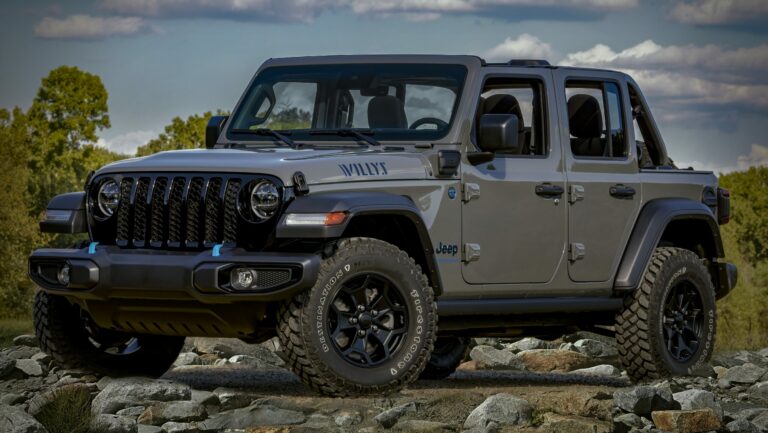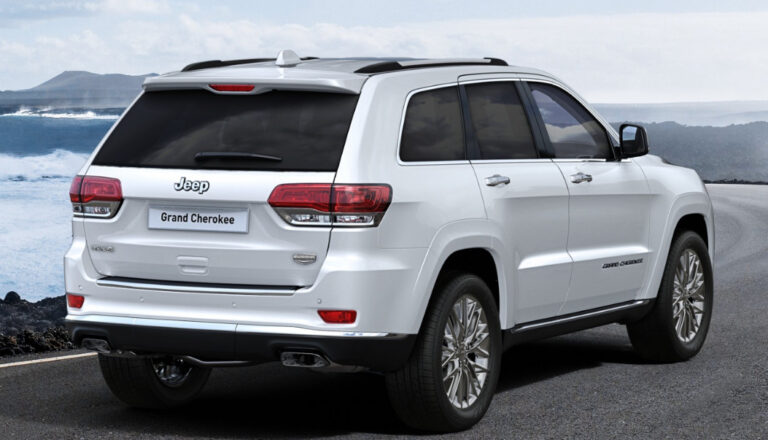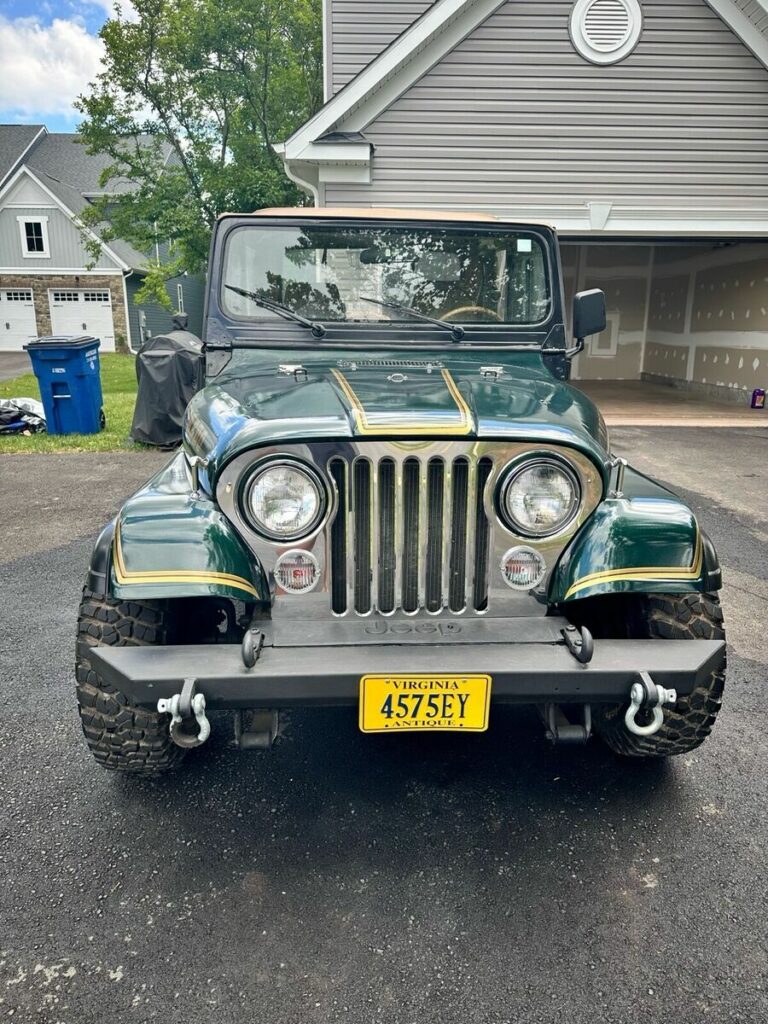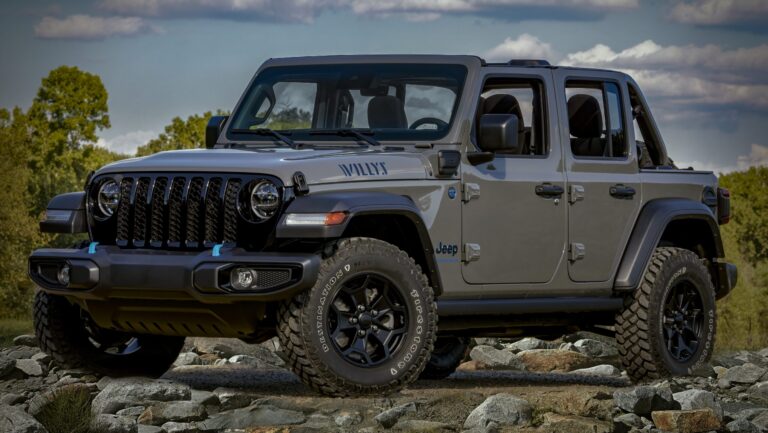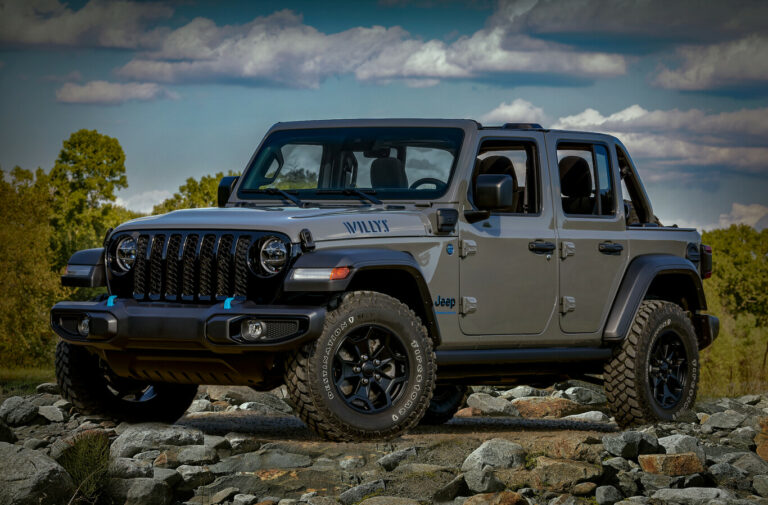Classic Jeep Grand Cherokee For Sale: Your Comprehensive Guide to an Enduring Icon
Classic Jeep Grand Cherokee For Sale: Your Comprehensive Guide to an Enduring Icon jeeps.truckstrend.com
The allure of a classic vehicle often lies not just in its aesthetics, but in the story it tells, the adventures it promises, and the enduring quality it represents. Among the pantheon of beloved American automobiles, the Jeep Grand Cherokee holds a unique and revered place. More than just an SUV, the classic Jeep Grand Cherokee—particularly the ZJ (1993-1998) and WJ (1999-2004) generations—stands as a testament to rugged capability blended with unexpected luxury, offering a driving experience that modern vehicles often struggle to replicate. For those seeking a capable off-roader, a distinctive daily driver, or a project vehicle with significant potential, a classic Jeep Grand Cherokee for sale presents an exciting and often affordable opportunity to own a piece of automotive history. This comprehensive guide will navigate you through everything you need to know about finding, evaluating, and owning one of these iconic machines.
The Enduring Appeal of a Classic Grand Cherokee
Classic Jeep Grand Cherokee For Sale: Your Comprehensive Guide to an Enduring Icon
The Jeep Grand Cherokee redefined the SUV segment upon its debut, offering a more refined and comfortable experience than its utilitarian predecessors, without sacrificing the legendary off-road prowess Jeep was known for. The "Classic" designation typically refers to the first two generations, which struck a near-perfect balance between rugged utility and upscale comfort. These vehicles were designed to be equally at home traversing challenging trails as they were cruising city streets. Their importance lies in their groundbreaking approach, setting the standard for the modern SUV, and their continued relevance is evident in the passionate community of owners and enthusiasts who keep these vehicles alive and thriving.
A Journey Through Generations: ZJ and WJ
When discussing classic Grand Cherokees, two distinct generations primarily come to mind, each with its unique characteristics and charm:
The ZJ Generation (1993-1998)
The original Grand Cherokee, the ZJ, was introduced with much fanfare, famously crashing through a glass window at the 1992 Detroit Auto Show. It immediately set itself apart with its unibody construction, offering a more car-like ride than traditional body-on-frame SUVs.
- Key Engines: The stalwart 4.0L AMC inline-six engine is a legendary powerplant, known for its incredible durability and torque. V8 options included the 5.2L (318 ci) and, for a single year in 1998, the highly sought-after 5.9L (360 ci) V8 in the 5.9L Limited trim, which transformed the ZJ into a true performance SUV.
- Off-Road Systems: Available with Selec-Trac (part-time or full-time 4WD) and Quadra-Trac (full-time 4WD with a viscous coupling), offering impressive capability.
- Why Buy a ZJ? Its classic Jeep styling, robust mechanicals (especially the 4.0L), and the raw, unrefined charm of early 90s SUVs make it a favorite for purists and off-road enthusiasts. The 5.9L Limited is a collector’s dream.
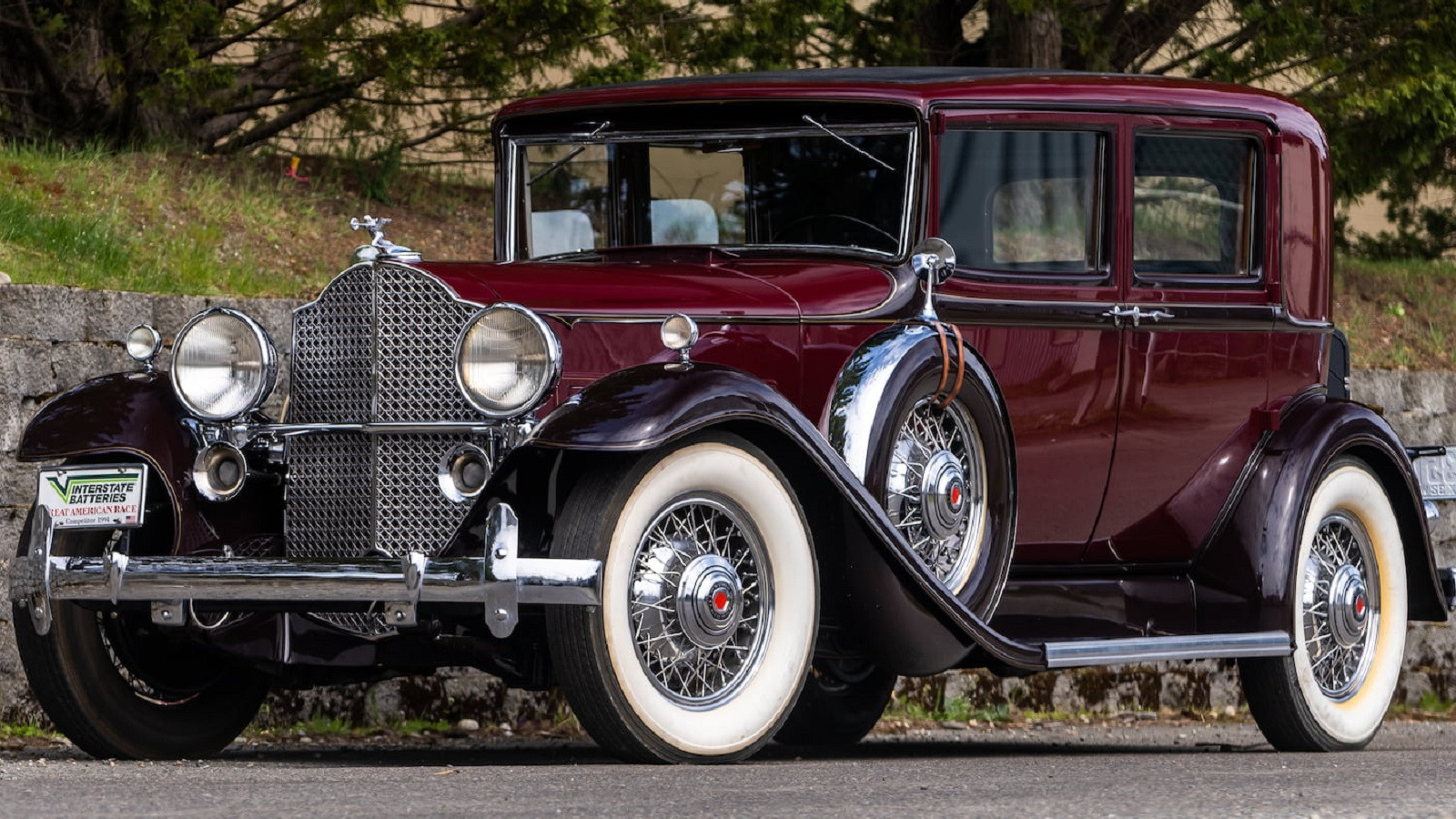
The WJ Generation (1999-2004)
The WJ Grand Cherokee built upon the ZJ’s success, offering a more refined design, improved ride quality, and advanced technological features.
- Key Engines: The 4.0L inline-six continued, joined by the new 4.7L "PowerTech" V8, a more modern and powerful option than the older 5.2L/5.9L.
- Off-Road Systems: Introduced the revolutionary Quadra-Drive system, featuring Vari-Lok axles with progressive locking differentials, providing unparalleled traction in challenging conditions. Selec-Trac and Quadra-Trac II (an improved version of the ZJ’s Quadra-Trac) were also available.
- Why Buy a WJ? It offers a more modern feel, superior ride comfort, and advanced 4WD systems. The 4.7L V8 provides a great balance of power and efficiency, and its interior feels more contemporary, making it a very capable and comfortable daily driver or adventure vehicle.
Why Invest in a Classic Grand Cherokee?
The decision to purchase a classic Grand Cherokee goes beyond simple transportation. It’s about embracing a lifestyle and appreciating engineering that stood the test of time.
- Affordability: Compared to modern SUVs with similar capabilities, classic Grand Cherokees are incredibly budget-friendly, both in initial purchase price and parts availability.
- Unmatched Durability: The 4.0L inline-six engine is legendary for its longevity, often reaching 200,000 to 300,000 miles with proper maintenance. The V8s are also robust.
- Legendary Off-Road Prowess: These vehicles genuinely live up to the Jeep name, capable of tackling challenging trails straight from the factory, with ample aftermarket support for further customization.
- Timeless Design: Both the ZJ and WJ boast designs that have aged gracefully, avoiding the overly complex or bulbous aesthetics of some contemporary SUVs.
- Customization Potential: A vast aftermarket exists for suspension lifts, bumpers, armor, and performance upgrades, allowing owners to tailor their Grand Cherokee to their exact needs and desires.
- Community and Support: A vibrant and active community of classic Grand Cherokee enthusiasts provides a wealth of knowledge, support, and camaraderie.
- Potential for Appreciation: Well-maintained, low-mileage examples, particularly rare trims like the 5.9L Limited ZJ, are beginning to appreciate in value, making them a potential investment.
What to Look For When Buying a Classic Grand Cherokee
Purchasing a used vehicle, especially a classic, requires diligence. Here’s a detailed checklist for evaluating a classic Grand Cherokee for sale:
- Rust: This is paramount. Check the frame rails, rocker panels, floorboards (under carpets), shock mounts, and around the gas tank. Surface rust is manageable, but extensive structural rust is a deal-breaker.
- Engine:
- 4.0L I6: Listen for ticking (exhaust manifold cracks are common and usually minor), knocking (bad rod bearings – avoid!), or excessive smoke. Check for oil leaks, especially the rear main seal (common but not always severe) and valve cover.
- V8s (5.2L, 5.9L, 4.7L): Listen for lifter noise, knocking, or overheating issues. Check for coolant leaks and oil sludge under the oil cap (indicates poor maintenance).
- Maintenance Records: Ask for detailed service history. Regular oil changes are crucial.
- Transmission: Test drive thoroughly. Look for smooth shifts (up and down), no harsh clunking or slipping. Check the fluid – it should be reddish and clear, not dark brown or smell burnt.
- Transfer Case: Engage 4WD (Hi and Lo) during the test drive. Listen for grinding or clunking. Ensure the 4WD light illuminates. For Quadra-Drive WJs, ensure the system engages smoothly.
- Suspension: Check for worn bushings (especially control arms), leaky shocks, and sagging springs. Look for uneven tire wear, which can indicate alignment issues or worn suspension components.
- Steering: Check for excessive play in the steering wheel, indicating worn steering box, tie rods, or ball joints.
- Brakes: Ensure firm pedal feel, no pulsing, and no pulling to one side.
- Interior: Test all electrical components (windows, locks, radio, HVAC). Check for blend door issues on WJs (clicking from behind the dash usually means a broken actuator). Inspect upholstery for rips and tears, and look for signs of water leaks.
- Tires: Check tread depth and ensure even wear. Mismatched tires or very worn tires indicate neglect or alignment issues.
- Documentation: A clean title is essential. Request a CarFax or AutoCheck report to check for accident history, odometer discrepancies, and previous owners.
Common Issues and Practical Solutions
No classic vehicle is without its quirks. Knowing common issues can help you diagnose and budget for potential repairs.
- Rust: As mentioned, prevalent in areas with road salt. Prevention is key (undercoating), and early remediation of surface rust can save the vehicle.
- Oil Leaks (4.0L): Rear main seal and valve cover gasket leaks are very common. They often aren’t severe but should be monitored.
- Blend Door Actuators (WJ): A common failure causing HVAC issues (no heat/AC on one side). Aftermarket repair kits are available, but it’s a labor-intensive fix.
- Power Window Regulators: Motors or cables can fail. Replacements are readily available.
- HVAC Fan Resistor (ZJ/WJ): Can cause fan speed issues. An easy and inexpensive fix.
- Headliner Sag: Common due to age. Can be repaired by re-gluing or replacing the fabric.
- Transmission (if neglected): The 42RE (ZJ) and 45RFE (WJ) transmissions are robust but require regular fluid and filter changes. Neglect leads to issues.
Where to Find Your Classic Grand Cherokee
- Online Marketplaces: Craigslist, Facebook Marketplace, eBay Motors are excellent starting points. Use specific search terms like "Jeep Grand Cherokee ZJ" or "WJ Overland."
- Specialized Forums & Groups: Online forums (e.g., JeepForum.com, NAXJA.org) and Facebook groups dedicated to ZJ/WJ owners are fantastic resources. Owners often sell their well-maintained vehicles within these communities.
- Local Dealerships: Less likely to find true classics, but some smaller used car lots might have them.
- Word of Mouth: Let friends and family know you’re looking.
- Auctions: Online and local auctions can yield great deals, but often come with more risk.
Pricing Expectations and Valuation
The price of a classic Grand Cherokee varies wildly based on generation, trim level, engine, mileage, condition, and modifications.
- Condition is King: A pristine, low-mileage example will command a significantly higher price than a high-mileage, rust-belt survivor.
- Rare Trims: The 5.9L Limited ZJ and the WJ Overland (with Quadra-Drive and the 4.7L H.O. V8) typically fetch premium prices.
- Modifications: Well-executed, desirable modifications (quality lift, winch bumper) can add value, but poorly done or extreme modifications might detract.
Generally, expect to find projects for under $2,000, decent drivers for $3,000-$6,000, and excellent, low-mileage examples for $7,000-$15,000+, especially for rare trims.
Classic Jeep Grand Cherokee Estimated Price Guide
Please note: These are estimated price ranges and can vary significantly based on location, specific vehicle history, modifications, and market demand.
| Generation | Trim Level | Engine | Condition: Fair ($) | Condition: Good ($) | Condition: Excellent ($) | Notes |
|---|---|---|---|---|---|---|
| ZJ | Laredo | 4.0L I6 | 1,500 – 3,000 | 3,000 – 5,500 | 5,500 – 8,000 | Common, robust daily driver. |
| (1993-1998) | Limited | 4.0L I6 / 5.2L V8 | 2,000 – 3,500 | 3,500 – 6,500 | 6,500 – 9,500 | More features, V8 adds appeal. |
| Orvis | 5.2L V8 | 2,500 – 4,000 | 4,000 – 7,000 | 7,000 – 10,000+ | Rare, luxury-focused trim. | |
| 5.9L Limited | 5.9L V8 | 4,000 – 7,000 | 7,000 – 12,000 | 12,000 – 20,000+ | Highly sought-after collector’s item, performance flagship. | |
| WJ | Laredo | 4.0L I6 / 4.7L V8 | 2,000 – 3,500 | 3,500 – 6,000 | 6,000 – 8,500 | Great value, improved ride. |
| (1999-2004) | Limited | 4.0L I6 / 4.7L V8 | 2,500 – 4,500 | 4,500 – 7,500 | 7,500 – 10,000+ | Popular, well-equipped, often with Quadra-Trac II. |
| Overland | 4.7L H.O. V8 | 3,500 – 6,000 | 6,000 – 10,000 | 10,000 – 15,000+ | Top-tier luxury and off-road capability with Quadra-Drive and H.O. V8. | |
| Special Edition/Sport | 4.0L I6 / 4.7L V8 | 2,000 – 3,500 | 3,500 – 6,500 | 6,500 – 9,000 | Specific trim packages, similar to Laredo/Limited with unique features. |
Frequently Asked Questions (FAQ) about Classic Grand Cherokees
Q1: Is a classic Grand Cherokee a reliable daily driver?
A1: Yes, absolutely, especially with the 4.0L inline-six engine and if well-maintained. The WJ generation offers a more refined daily driving experience. Regular maintenance is key, as with any older vehicle.
Q2: Which engine is best for a classic Grand Cherokee?
A2: For ultimate reliability and ease of maintenance, the 4.0L I6 is hard to beat. For more power and a smoother driving experience, the 4.7L V8 in the WJ is excellent. The 5.9L V8 (ZJ) is a performance icon but rarer and might require more specialized care.
Q3: Are parts hard to find for classic Grand Cherokees?
A3: Generally, no. Parts for both ZJ and WJ generations are widely available, thanks to their popularity and shared components with other Chrysler/Jeep vehicles. Aftermarket support is also extensive.
Q4: Can I really take a classic Grand Cherokee off-roading?
A4: Yes! Both generations are highly capable off-road vehicles right from the factory, especially those equipped with Selec-Trac, Quadra-Trac, or Quadra-Drive. Many owners enhance them further with lifts and other modifications.
Q5: What’s the best generation to buy for a first-time classic Jeep owner?
A5: The WJ (1999-2004) is often recommended for its improved ride, better ergonomics, and advanced 4WD systems, offering a more comfortable entry into classic Jeep ownership while retaining strong off-road credentials.
Q6: How much should I budget for maintenance on a classic Grand Cherokee?
A6: It depends on the vehicle’s initial condition. For a well-maintained example, budget $500-$1000 annually for routine maintenance and minor repairs. If you buy a project, expect to invest significantly more upfront to bring it up to reliable standards.
Q7: Are classic Grand Cherokees good for towing?
A7: Yes, with the V8 engines, they are capable towers. The 5.2L V8 (ZJ) and 4.7L V8 (WJ) often have towing capacities in the 5,000-6,500 lb range, depending on configuration. Always check the specific vehicle’s owner’s manual for exact figures.
Conclusion
The classic Jeep Grand Cherokee for sale represents an incredible opportunity to own a vehicle that masterfully blends rugged capability with a surprising degree of comfort and style. Whether you’re drawn to the raw charm of a ZJ or the refined versatility of a WJ, these enduring icons offer a unique driving experience and a strong community of enthusiasts. By understanding their history, knowing what to look for, and being prepared for common maintenance, you can confidently embark on the rewarding journey of classic Grand Cherokee ownership. It’s more than just buying a vehicle; it’s about investing in a legacy of adventure and an automotive legend that continues to inspire.
